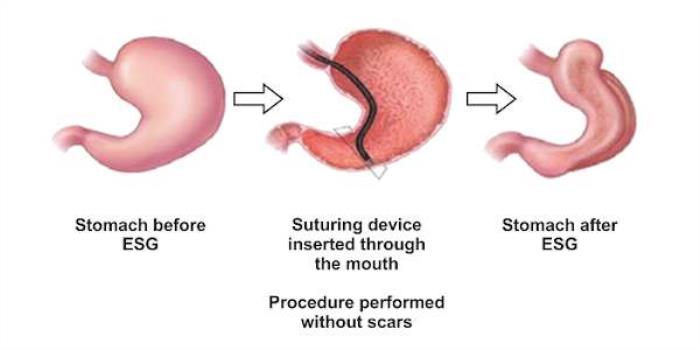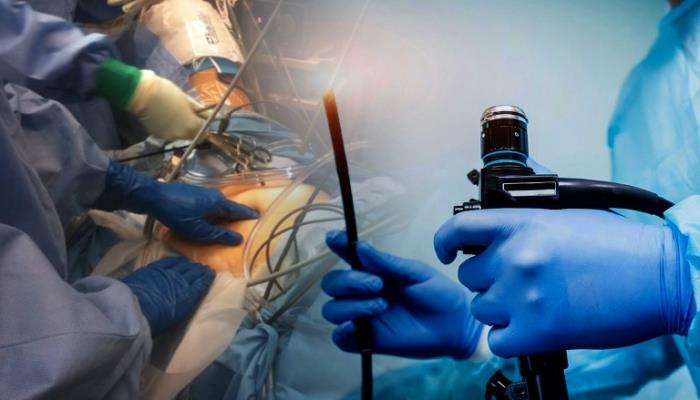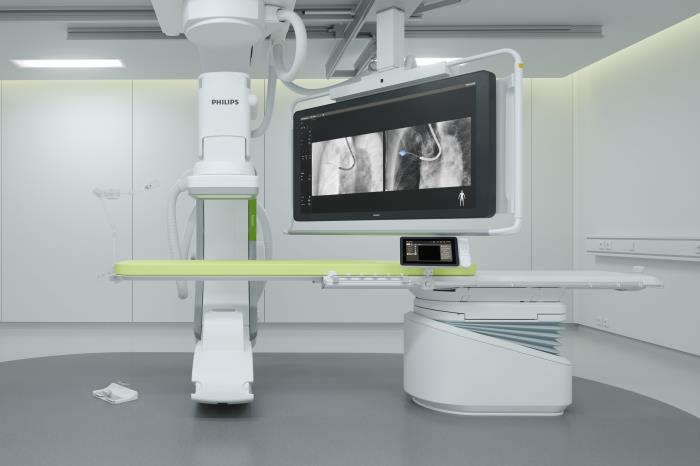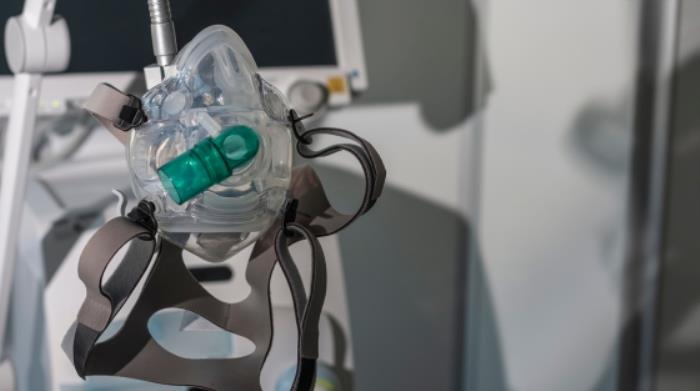Endoscopic Sleeve Gastroplasty (ESG) is rapidly gaining popularity as an effective, minimally invasive solution for weight loss, particularly among individuals who do not qualify for or prefer to avoid traditional bariatric surgery. ESG offers significant weight loss results with fewer risks, a shorter recovery time, and no external incisions, making it an attractive option for patients looking for a less invasive alternative. As awareness and access to the procedure increase, ESG continues to rise in demand as a promising tool for managing obesity and its associated comorbidities.
How ESG Has Evolved: A Look at the Latest Innovations
Since its introduction, ESG has seen numerous advancements in both technique and technology, making it safer and more effective. Initially, ESG was a simpler procedure, but recent innovations have enhanced its precision and outcomes. These developments include improved endoscopic tools, advanced suturing techniques, and real-time imaging systems that allow for better visualization and accuracy during the procedure. The evolution of ESG reflects the broader trend toward more refined, patient-friendly approaches to weight loss interventions.
Overview of ESG Procedure: A Minimally Invasive Approach
ESG is performed using an endoscope, a thin, flexible tube inserted through the mouth, which enables the surgeon to access the stomach without making any external incisions. The procedure involves placing a series of sutures along the stomach’s interior to create a smaller, tube-like shape, reducing the stomach’s volume. This minimally invasive approach leads to a faster recovery time, less post-operative pain, and fewer complications compared to traditional bariatric surgeries. Patients can typically return to their normal activities within a few days following the procedure.

New Suturing Technologies in ESG: Enhancing Precision
One of the key innovations in ESG is the development of new suturing technologies that allow for greater precision and durability in stomach resizing. Modern suturing devices are designed to create tighter and more secure stitches, reducing the risk of suture failure and improving the long-term success of the procedure. These advanced tools also enable more efficient stitching, minimizing the procedure’s duration while ensuring a more uniform and stable stomach sleeve. Enhanced suturing technology plays a vital role in achieving consistent results and long-term weight loss.
Advances in Endoscopic Devices: Improving Safety and Efficiency
The latest generation of endoscopic devices used in ESG has significantly improved both the safety and efficiency of the procedure. Modern endoscopes are equipped with high-definition cameras that provide clear, real-time imaging, allowing surgeons to navigate the stomach with greater accuracy. Additionally, improved endoscopic tools are smaller and more flexible, reducing the risk of injury to surrounding tissues. These advancements have led to better patient outcomes, with fewer complications and a smoother recovery process.

The Role of Robotics in ESG: Greater Precision and Control
Robotics is starting to play a growing role in the field of endoscopic procedures, including ESG. Robotic-assisted systems provide surgeons with enhanced precision and control, allowing for more delicate and accurate movements during the suturing process. These systems also offer better visualization and the ability to make adjustments in real time, further increasing the safety and effectiveness of the procedure. As robotic technology advances, it is expected to become an integral part of ESG, further improving the precision and success of this minimally invasive weight loss solution.
3D Imaging and Navigation Systems: Revolutionizing ESG Procedures
The introduction of 3D imaging and navigation systems has greatly enhanced the precision of Endoscopic Sleeve Gastroplasty (ESG) procedures. Surgeons can visualize the patient's anatomy in three dimensions, allowing for more accurate placement of sutures and a deeper understanding of the stomach’s structure. This technology minimizes errors, optimizes surgical outcomes, and improves patient safety.

Real-Time Monitoring and Feedback During ESG
Real-time monitoring and feedback systems provide surgeons with immediate data on the patient’s condition during ESG. This includes information on tissue tension, suture integrity, and vital signs. Such systems ensure that adjustments can be made during the procedure, reducing complications and improving the overall effectiveness of the surgery.
Innovative Anesthesia Techniques for Better Patient Comfort
Recent advancements in anesthesia techniques, such as targeted sedation and local anesthesia with minimal doses, have enhanced patient comfort during ESG procedures. These innovations reduce recovery time, minimize side effects, and allow for quicker discharge from the hospital.

Smart Sutures: Enhancing Post-Surgical Recovery
Smart sutures equipped with sensors are emerging as a revolutionary tool in post-surgical care. These sutures can monitor the healing process and detect any signs of infection or tension at the surgical site, providing real-time feedback to healthcare professionals and improving patient outcomes after ESG.
Artificial Intelligence and Machine Learning in ESG Procedures
AI and machine learning are playing an increasing role in ESG, from preoperative planning to intraoperative decision-making. AI algorithms can analyze patient data to predict outcomes, personalize treatment plans, and assist surgeons by providing real-time insights during the procedure, enhancing both safety and precision.
Integration of Telemedicine for Pre- and Post-ESG Care
Telemedicine has become an integral part of ESG care, offering patients the convenience of remote consultations, preoperative assessments, and follow-up appointments. This reduces the need for in-person visits, ensures continuous care, and allows healthcare professionals to monitor patients' progress post-surgery more effectively.
Innovations in Post-Operative Monitoring: Wearable Technology
Wearable technology, such as smartwatches and biosensors, is being used to monitor patients after ESG procedures. These devices track vital signs, physical activity, and even sleep patterns, providing valuable data that helps physicians manage recovery and detect potential complications early.
The Role of Virtual Reality in ESG Surgical Training
Virtual reality (VR) is transforming surgical training for ESG. Surgeons can now use VR to simulate procedures, practice complex techniques, and improve their skills in a controlled environment. This leads to better-prepared surgeons, reduced procedural times, and improved patient outcomes.
Comparing ESG’s Technological Advancements with Traditional Bariatric Surgery
Technological advancements in ESG, such as the use of AI, 3D imaging, and smart sutures, offer several benefits over traditional bariatric surgeries like gastric bypass. ESG is minimally invasive, has fewer complications, and allows for faster recovery, making it an increasingly popular option for weight loss.
The Impact of Technology on ESG Success Rates and Patient Outcomes
With the integration of advanced technologies, ESG procedures have become more precise, safer, and more effective. These advancements have improved success rates, reduced the risk of complications, and led to faster recoveries, contributing to higher patient satisfaction.
Future Directions: What’s Next for ESG Technology?
The future of ESG technology includes further integration of AI for personalized treatment plans, advancements in robotic-assisted surgeries, and the development of more sophisticated monitoring devices. These innovations will continue to improve the safety, efficiency, and outcomes of ESG procedures.
Patient Experiences with New ESG Technologies
Patients who have undergone ESG using the latest technologies report enhanced comfort, shorter recovery times, and better overall experiences. Real-time monitoring and minimally invasive techniques contribute to a smoother recovery, while wearable technology and telemedicine provide a high level of post-operative care.
How Technology Enhances ESG's Safety and Reduces Recovery Time
Technological innovations in ESG, such as real-time monitoring and minimally invasive tools, have significantly improved the procedure's safety profile. Patients experience less pain, fewer complications, and faster recoveries, making ESG a safer and more efficient option for weight loss.
Conclusion: The Future of ESG and Emerging Technologies
The integration of advanced technologies is transforming Endoscopic Sleeve Gastroplasty into a highly precise, safe, and effective weight loss procedure. With ongoing advancements in AI, 3D imaging, wearable devices, and anesthesia techniques, the future of ESG promises even better patient outcomes and higher success rates.
Understanding Anesthesia Options for Endoscopic Sleeve Gastroplasty
Gain insights into the various anesthesia options available for Endoscopic Sleeve Gastroplasty. This section discusses the types of anesthesia used, their benefits, and considerations for patient safety, ensuring a comfortable surgical experience.
How Endoscopic Sleeve Gastroplasty Affects Metabolism and Hormones
Explore how Endoscopic Sleeve Gastroplasty impacts metabolism and hormone levels. This section delves into the physiological changes that occur after the procedure, including effects on appetite-regulating hormones and overall metabolic rate, providing a deeper understanding of its role in weight management.
Best Endoscopic Sleeve Gastroplasty in India
The Best Endoscopic Sleeve Gastroplasty in India is a non-surgical, minimally invasive weight loss procedure that reduces stomach size, helping patients achieve significant weight loss without the need for incisions.
Best ESG Hospitals in India
The Best ESG Hospitals in India are equipped with advanced technology and skilled endoscopic specialists, offering comprehensive care from initial consultation to post-procedure follow-up for effective weight management.
Best ESG Surgeons in India
The Best ESG Surgeons in India are highly trained in advanced endoscopic techniques, offering personalized care to help patients achieve their weight loss goals safely and effectively.
FAQ
What new technologies are being used in endoscopic sleeve gastroplasty?
New technologies in ESG include 3D imaging, smart sutures, AI for real-time decision-making, wearable monitoring devices, and innovations in anesthesia for improved patient comfort.
How do robotics and AI enhance ESG procedures?
Robotics and AI enhance ESG by improving surgical precision, providing real-time feedback, and offering personalized treatment plans based on patient data.
What role does 3D imaging play in ESG surgeries?
3D imaging helps surgeons visualize the patient’s anatomy in greater detail, leading to more accurate procedures and reduced risk of complications.
Are new technologies improving the safety and outcomes of ESG?
Yes, advancements such as real-time monitoring, AI, and smart sutures have improved ESG safety, reduced recovery times, and enhanced overall patient outcomes.
How is post-operative care evolving with advances in ESG technology?
Post-operative care is improving through wearable monitoring devices and telemedicine, which provide continuous tracking of patient recovery and enable timely interventions if needed.
Related Resources
At ArogyaJivan, we strive to provide you with the most accurate and up-to-date information to help you make informed decisions about your healthcare. Whether you are searching for the Best Doctors in India or the Top 5 Doctors in India, our resources are tailored to guide you through your medical journey. Additionally, our comprehensive guides on the Best Hospitals in India and the Top 5 Hospitals in India will assist you in choosing the right healthcare facility for your needs. Explore these resources to ensure you receive the best possible care.